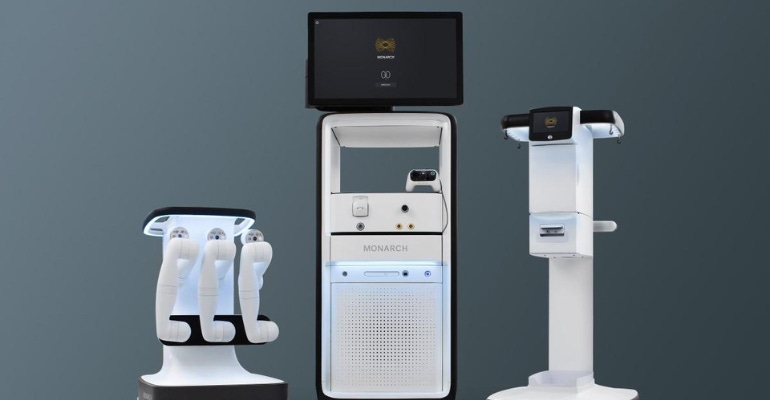J&J's Monarch Assists in Kidney Stone Removal
A clinical study aims to demonstrate the potential benefits of robotic mini-percutaneous nephrolithotomy (a procedure for removing kidney stones) using the Monarch platform.
February 8, 2023

A patient at the University of California, Irvine (UCI) is the first to have kidney stones removed using Johnson & Johnson's Monarch robotic-assisted surgical platform.
J&J's Ethicon inherited the Monarch platform through the company's $3.4 billion acquisition of Auris Health in 2019. FDA cleared the Monarch for robotic-assisted endourological procedures last year.
The first-in-human procedure was part of a clinical study that aims to demonstrate the benefits of using the robotic-assisted system for mini-percutaneous nephrolithotomy (PCNL) procedures. PCNL procedures have demonstrated superior stone clearance for patients with larger kidney stones, yet they represent only 7% to 8% of kidney stone procedures conducted in the U.S. today due to multiple barriers.
Ethicon said the Monarch platform enables urologists to overcome many of these PCNL barriers using minimally invasive technology. When compared to standard fluoroscopic guided access techniques, the Monarch provides 80% less radiation exposure during percutaneous access, improved accuracy and consistency when performing percutaneous access, and fewer needle sticks when obtaining access, according to the company.
“This clinical study is the first in the world to research and demonstrate the potential for improved navigation, access, clearance and control in mini-PCNL procedures using the Monarch platform for urology,” said Jaime Landman, MD, chair of the department of urology at the UCI School of Medicine, and director of the UCI Health Kidney Stone & Kidney Disease Services. “In addition to potentially helping urologists achieve stone-free patients in a single procedure, this approach could help reduce the need for retreatment after kidney stone removal and decrease risks and complication rates.”
Ethicon said the Monarch platform is the first flexible robotic platform cleared for use in bronchoscopy and urology procedures. The system is designed to allow urologists to navigate through the kidney using robotic assistance designed for access, clearance, and control using a handheld controller. It provides urologists with one platform that supports both ureteroscopic and PCNL procedures, the company noted.
This study will involve collecting performance data on robotic mini-PCNL procedures to optimize the platform and inform training and education, Ethicon said. The study involves a collaboration with co-investigator, Mihir Desai, MD, from the University of Southern California.
“The prevalence of kidney stones remains high, and many urologists seek a new treatment option that reduces overall retreatment and complication rates. In patients who require treatment through surgery, close to one in two will require retreatment within five years,” Desai said.
The Monarch platform uses an electromagnetic platform designed to help urologists gain more precise access to the kidney with the goal of improving the way physicians and patients view the removal of kidney stones.
The Auris acquisition fueled J&J’s ambitions of becoming a robotic-assisted surgical powerhouse. Those ambitions were brought to a fever pitch later that year when J&J agreed to acquire the remaining stake in Verb Surgical – a joint venture with Verily.
Then, in November 2020, J&J generated a lot of hype around the development of its Ottava surgical robotics platform. Despite tapping an all-star team (including the man who pioneered the surgical robotics field, Frederic Moll, MD), pandemic-related challenges set development of the surgical robotics platform back by about two years.
About the Author(s)
You May Also Like



.png?width=300&auto=webp&quality=80&disable=upscale)
